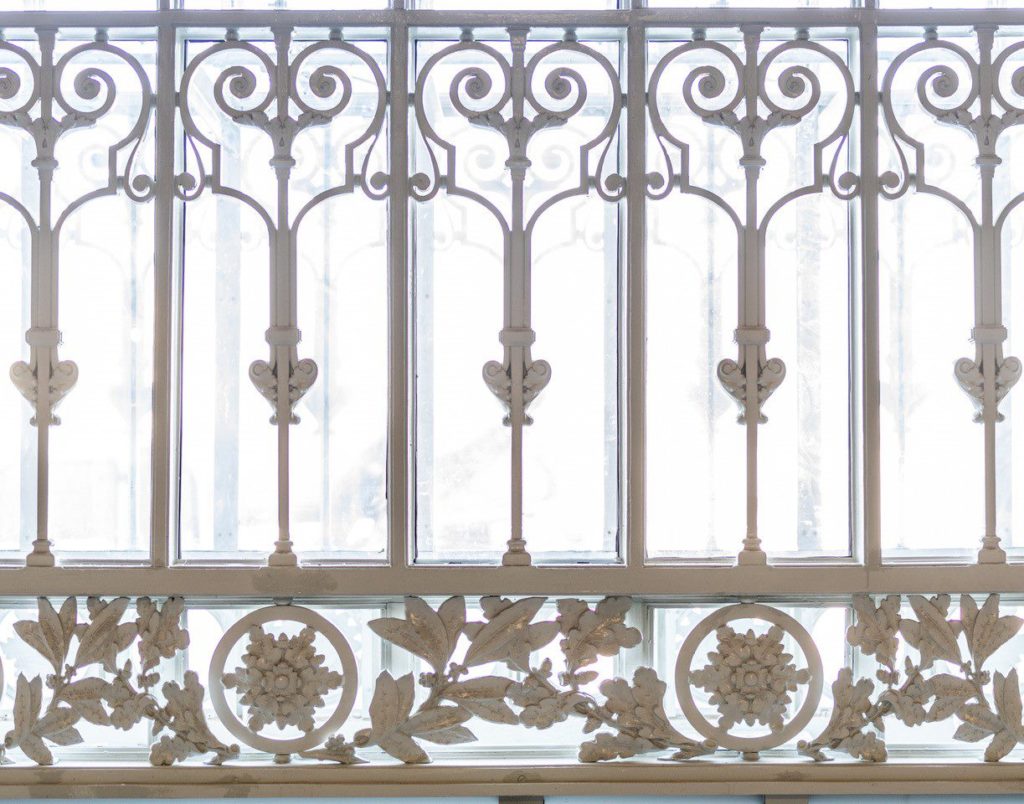Whereas concrete 3D printing is making all of the headlines, there are more uses for 3D printing in construction that are underexposed. One that has vexed me for a few years is the uses of 3D printing in restoration. I’ve heard of a number of projects where 3D printing has been used to restore buildings, details, windowsills and much more. Usually, such projects avoid the limelight.
Now, Ford is showcasing an additive restoration project that will hopefully inspire others. The team is working on renovating Michigan Central Station for the “Michigan Central mobility innovation district.” The 100-year-old former train depot is in the painstaking process of being rehabilitated to serve as a hub for entrepreneurs, startups, and Ford’s mobility team to create urban transportation solutions.

Previously, the company has used additive to make a steam injector for its Henry Ford Museum of American Innovation and other parts to restore the Fairlane Estate. For the Michigan Central project, the team had to restore some highly detailed window elements and tiles. Remaining tiles and other existing elements were 3D scanned before the CAD files were cleaned up and repaired. In some cases, the team used different scans of different examples of the same tile to reconstruct a whole piece. These were then 3D printed at Ford’s Advanced Manufacturing Center in Redford Township.
“Ford could have decided to just modernize Michigan Central Station, but they’re taking great efforts to make sure this thing really reflects the way this building looked and felt inside and outside,” said Ford´s additive manufacturing technical leader for manufacturing, Harold Sears.
In total, the team 3D printed hundreds of components including 550 parts for flower rosettes. The 3D scanning took months, while the 3D printing took three weeks.
“This is not just a research and advanced engineering project – this is a collaborative project. We made these parts in-house. Ford made these parts. Part of our drive as a company is to bring new technologies into production applications when they’re ready, and to always be innovating to find a better, more sustainable, safer way to bring things to fruition,” said Ford research and advanced engineering’s Bob Bedard.
You may now think that this is just a small, cute project for the automotive giant. However, this is an application with huge potential across many countries. Many buildings have original architectural details that restorers, construction firms, governments, and developers want to maintain.
Often, these are made from wrought iron or plastered by hand. Sometimes, this is done with such skill that we’d be hard pressed to replicate. Other times, it has been done in such a time-consuming way that it would be cost prohibitive to replicate. Sometimes, we simply cannot understand the artisanship involved and cannot copy these pieces. In turn, 3D printing and 3D scanning may be the only way to cost-effectively replicate these details. And this is being done in a limited way the world over, but they’re not necessarily talking about it. This is a market and a need that is quite simply unmet by industry.
Look at this project and how immense it is and then think that a few hundred 3D prints could replicate these unique details. A lot of them could be made on rather quotidian SLA and FDM 3D printers and then painted, resulting in a very low cost per part. The scanning here is the real stickler.
In this case, months of continuous scanning would have probably doomed this project from the start. But, in many cases, 3D printing plus scanning is a low-cost, cost effective and very fast solution to building restoration. With architectural details specifically, the business case is very good because parts are relatively small. Even 3D printing even much bigger elements could cheap with stunning results. This includes gargoyles, architectural sculpture, bas reliefs, façade elements, monumental wood parts, statues. (non-load bearing) arches, hand rails, railings, grilles, plaster work and more.
Because parts will be painted over, a lot of the issues with rough surfaces are non existent. And costs melt away in the face of labor hours to do the same thing some other way. This is a potentially very exciting area for 3D printing that is sadly unexplored and not discussed enough.
Subscribe to Our Email Newsletter
Stay up-to-date on all the latest news from the 3D printing industry and receive information and offers from third party vendors.
You May Also Like
Profiling a Construction 3D Printing Pioneer: US Army Corps of Engineers’ Megan Kreiger
The world of construction 3D printing is still so new that the true experts can probably be counted on two hands. Among them is Megan Kreiger, Portfolio Manager of Additive...
US Army Corps of Engineers Taps Lincoln Electric & Eaton for Largest 3D Printed US Civil Works Part
The Soo Locks sit on the US-Canadian border, enabling maritime travel between Lake Superior and Lake Huron, from which ships can reach the rest of the Great Lakes. Crafts carrying...
Construction 3D Printing CEO Reflects on Being Female in Construction
Natalie Wadley, CEO of ChangeMaker3D, could hear the words of her daughter sitting next to her resounding in her head. “Mum, MUM, you’ve won!” Wadley had just won the prestigious...
1Print to Commercialize 3D Printed Coastal Resilience Solutions
1Print, a company that specializes in deploying additive construction (AC) for infrastructure projects, has entered an agreement with the University of Miami (UM) to accelerate commercialization of the SEAHIVE shoreline...





























